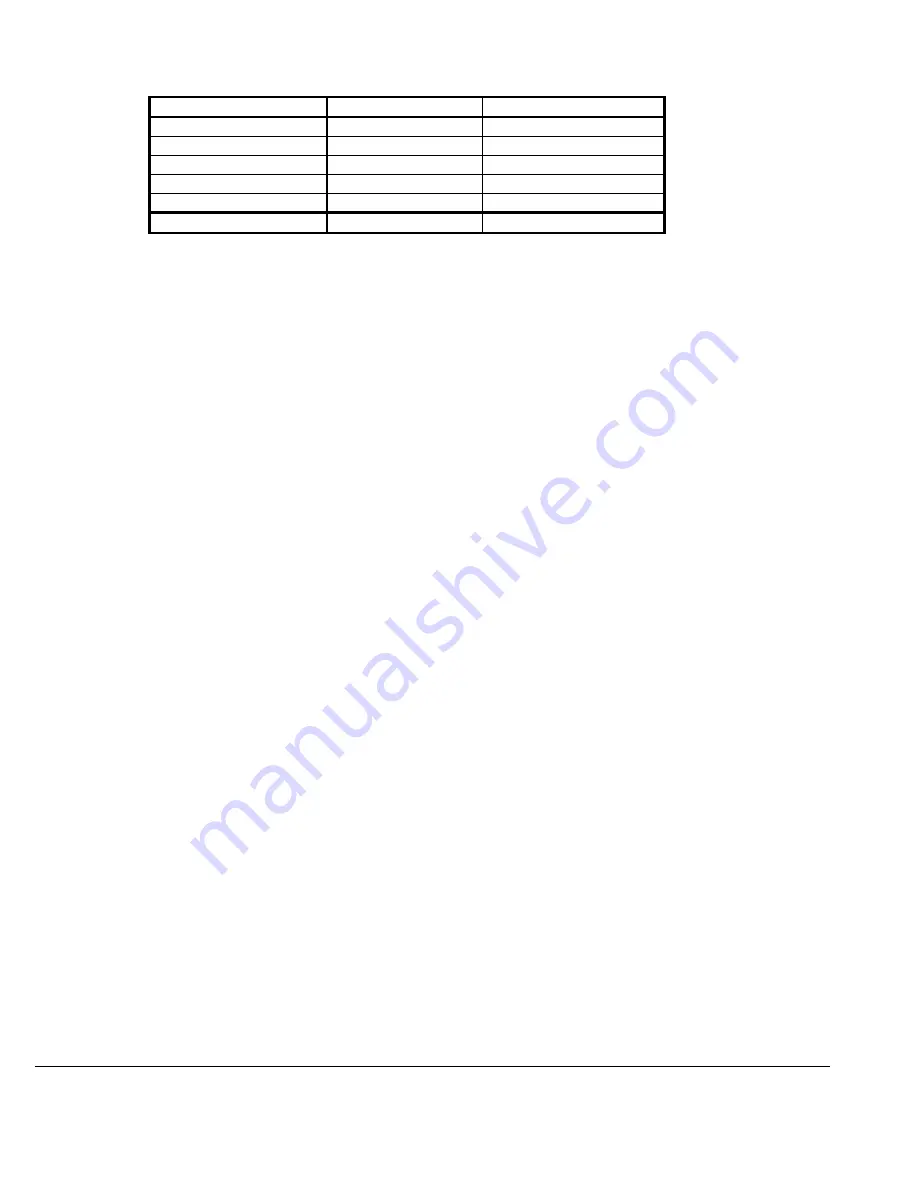
D–EIMWC00808-16HU - 48/64
Table 14, Metal and Moisture Limits
Element
Upper Limit (PPM)
Action
Aluminum
50
1
Copper
100
1
Iron
100
1
Moisture
150
2 & 3
Silica
50
1
Total Acid Number (TAN)
0.19
3
Key to Action
1)
Re-sample after 500 hours of unit operation.
a)
If content increases less than 10%, change oil and oil filter and re-sample at normal interval (usually
annual).
b)
If content increases between 11% and 24%, change oil and oil filter and re-sample after an additional 500
hours of operation.
c)
If content increases more than 25%, inspect compressor for cause.
2)
Re-sample after 500 hours of unit operation.
a)
If content increases less than 10%, change filter-drier and re-sample at normal interval (usually annual).
b)
If content increases between 11% and 24%, change filter-drier and re-sample after an additional 500
hours of operation.
c)
If content increases more than 25%, monitor for a water leak.
3)
If TAN is less than 0.10, system is safe as far as acid is concerned.
a)
For TAN between 0.10 and 0.19, re-sample after 1000 hours of operation.
b)
For TAN above 0.19, change oil, oil filter, and filter-drier and resample at normal interval
Changing Oil Filters
Daikin chillers are at positive pressure at all times and do not leak contaminated moist air into the refrigerant circuit,
thereby eliminating the need for annual oil changes. An annual laboratory oil check is recommended to check overall
compressor condition.
CE 079 and Larger Compressors -
The oil filter in these compressors can be changed by simply isolating the filter
cavities. Close the oil discharge line service valve at the oil pump (at the filter on CE126). Remove the filter cover;
some foaming can occur but the check valve should limit leakage from other compressor cavities. Remove the filter,
replace with new element, and replace filter cover using a new gasket. Reopen the valve in the pump discharge line
and purge air from the oil filter cavity.
When machine is operated again, the oil level must be checked to determine if oil needs to be added to maintain the
proper operating level.
Refrigerant Cycle
Maintenance of the refrigerant cycle includes maintaining a log of the operating conditions, and checking that the
unit has the proper oil and refrigerant charge.
At every inspection, the oil, suction, and discharge pressures should be noted and recorded, as well as condenser and
chiller water temperatures.
The suction line temperature at the compressor should be taken at least once a month. Subtracting the saturated
temperature equivalent of the suction pressure from this will give the suction superheat. Extreme changes in
subcooling and/or superheat over a period of time will indicate losses of refrigerant or possible deterioration or
malfunction of the expansion valves. Proper superheat setting is 0 to 1 degree F (0.5 degree C) at full load. Such a
small temperature difference can be difficult to measure accurately. Another method is to measure the compressor
discharge superheat, the difference between the actual discharge temperature and the saturated discharge
temperature. The discharge superheat should be between 14 and 16 degrees F (8 to 9 degrees C) at full load. The
liquid injection must be deactivated (by closing the valve in the feed line) when taking the discharge temperature.
















































